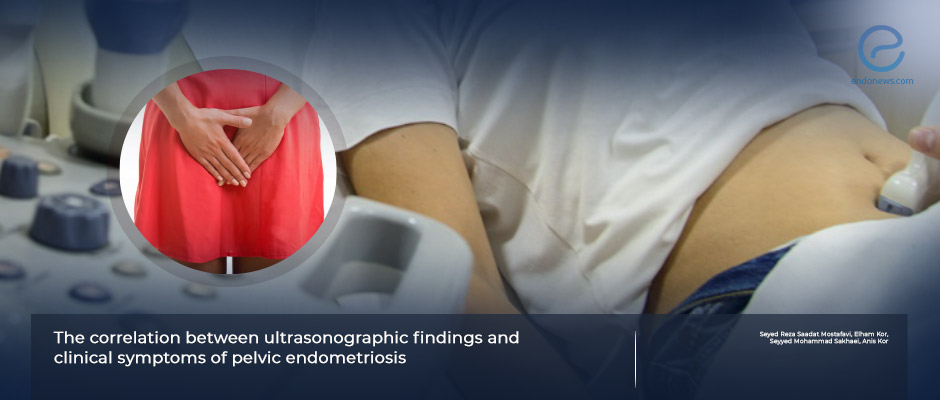Ultrasonographic findings and the clinical symptoms of pelvic endometriosis
May 8, 2024
Transvaginal and rectal ultrasonography are essential preoperative tools for endometriosis diagnosis.
Key Points
Importance:
- Transvaginal ultrasonography is comparable, even sometimes superior to MRI performance in diagnosing endometriosis.
Highlights:
- Ultrasonography should be used as the first-line imaging technique for preoperative diagnosis of endometriosis.
What's done here?:
- This retrospective descriptive-analytic study was performed in the Radiology department of Tehran University, Iran.
- An expert radiologist examined all patients suspected of endometriosis with a dynamic ultrasonography of four steps.
- Confirmation was made by laparoscopic surgery, based on the visualization of peritoneal implants, endometriomas, adhesions, and ureteric involvement.
Key Results:
- The data of 155 patients were evaluated along with demographic findings, pregnancy history, and infertility symptoms.
- One-third of the patients were below 30 years of age.
- The most common symptom was dysmenorrhea (95,4%). Abdominal pain, chronic fatigue, chronic pelvic pain, and dyspareunia were found in 86,9%, 65,1%, 47,1%, and 47,1%.
- Endometrioma was reported in 129 women, and almost two-thirds were located unilaterally.
- Complete and incomplete stenosis of Douglas Pouch was present in 131 women.
- Deep endometriotic implants were reported in 111 patients with greater than 3cm in one-third of cases.
- The severity of dysmenorrhea was related to intestinal involvement, while dyspareunia was related to Douglas obliteration.
Limitations:
- The clinical appearance of selected patients pointed to severe endometriosis that can easily correlated with transvaginal and transrectal findings.
- Most of all, this study summarized one-center clinical work instead of research that can give a promising future.
Lay Summary
Imaging techniques achieve the clinical diagnosis of endometriosis, which affects 10-15% of all women of reproductive age. Suspected patients with clinical history and symptoms need a systemic examination of the uterus, ovaries, adnexa, and peritoneal covering the rectouterine, retrocervical, and sigmoid regions. The efficacy of ultrasonographic examination has been shown in many studies. Transrectal and transvaginal ultrasonography are helpful and reliable tools for diagnosing endometriosis and mapping the nodules before laparoscopic surgery.
Mostafavi et al., from the Department of Radiology of Iran University of Medical Science, Tehran, aimed to investigate retrospectively the correlation between clinical and TVS findings based on the data of 155 women from their clinic. The woman's diagnosis was confirmed by laparoscopy. Data were collected through medical records, including TVS information such as endometrioma, endometriosis implants, stenosis of Douglas pouch, and pelvic organ involvement. The laparoscopic findings of the same patients were evaluated to investigate the correlation on verification.
Physical examinations and symptoms of these women included persistent and worsening cyclic or constant pelvic pain, dysmenorrhea, deep dyspareunia, cyclic dyschezia, cyclic dysuria, nodules in the cul de sac, retroverted uterus, and infertility.
In that selected group of women, the overall prevalence of endometrioma was 84,8%, and the cyst size was more than 3 cm in 80%. No relationship between the size of endometrioma and the severity of dyspareunia was detected. The authors also reported that patients with dyspareunia were five times more likely to have endometriosis than the patients without.
"Transvaginal ultrasound should be used as the first line of diagnosis in patients with clinically suspected endometriosis", the authors concluded. This study was recently published in BMC Research Notes.
Research Source: https://pubmed.ncbi.nlm.nih.gov/38637887/
transvaginal ultrasonography transrectal ultrasonography endometrioma dysmenorrhea dyspareunia chronic pelvic pain quality of life endometriosis.

